Cookie Policy
We use cookies to help improve the experience you have on this site. You can find out more here.
We use cookies to help improve the experience you have on this site. You can find out more here.
As a fishkeeper, there’s a good chance that you’re keeping some of the most diverse pet groups available. Look around our stores and you’ll find everything from Piranha to algae-eating catfish, fishes that either need animal protein or can become unwell if offered an excess of it.
We’re accustomed to the convenience of a pot of fish food and the contents of this pot have changed a lot over the years, although a few of us still get nostalgic over the pots of ‘Ant Eggs’ that used to be popular with fishkeepers of previous generations and can still be found occasionally. In a rather poetic turn of events, modern fish foods now return to insect protein as a more sustainable alternative to fish meal and closer to the natural diet of many of our fishes.
Whatever brand you choose, there’s some things to look out for when choosing a dried food. Fish can only process so much protein and this is contingent on growth rates, temperature, and other factors. This means that very high levels of protein will lead to higher rates of pollution as excess amounts are excreted by the fish, causing peaks in ammonia which leads to faster nitrate accumulation and associated knock-on effects, such as algae growth and discolouration of the aquarium water. Ash is another ingredient which can lead to increased accumulation of pollutants such as phosphate, with similar results. You’ll get better results and better value from a food which feeds your fishes without feeding your aquarium water. In most cases, a variety of foods is the best solution and offers enrichment and stimulation for our pets, as well as the more logical need for satisfying differing nutritional requirements.
A good basic staple flake https://www.fishkeeper.co.uk/aquacare-tropical-flakes-with-mealworm contains all the vitamins and minerals that are sometimes lacking in frozen or live foods and gives a good nutritional profile which makes sure your pets get all the essential building blocks for biological function. Flakes tend to be most suitable for small fish, especially those which feed from the water’s surface.
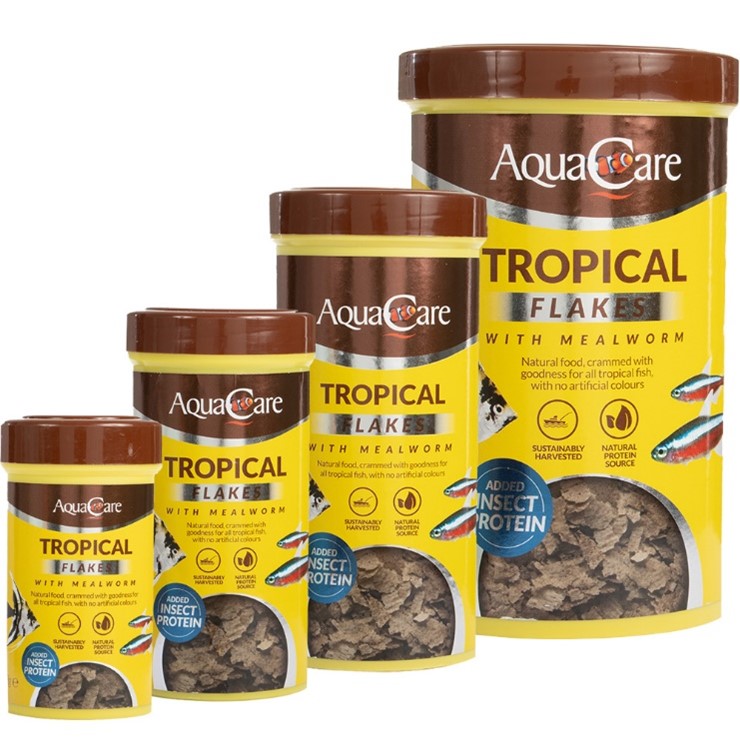
A refinement on the basic staple, colour enhancing flakes https://www.fishkeeper.co.uk/aquacare-colour-enhancing-tropical-flakes have more of the premium content such as shrimp meal which gives the fish more of the raw natural ingredients needed to manufacture pigments, that maximise their colouration. They can be used as a staple diet but may lead to the overexpression of some colour in domesticated fish that are meant to be pale when used in this way.
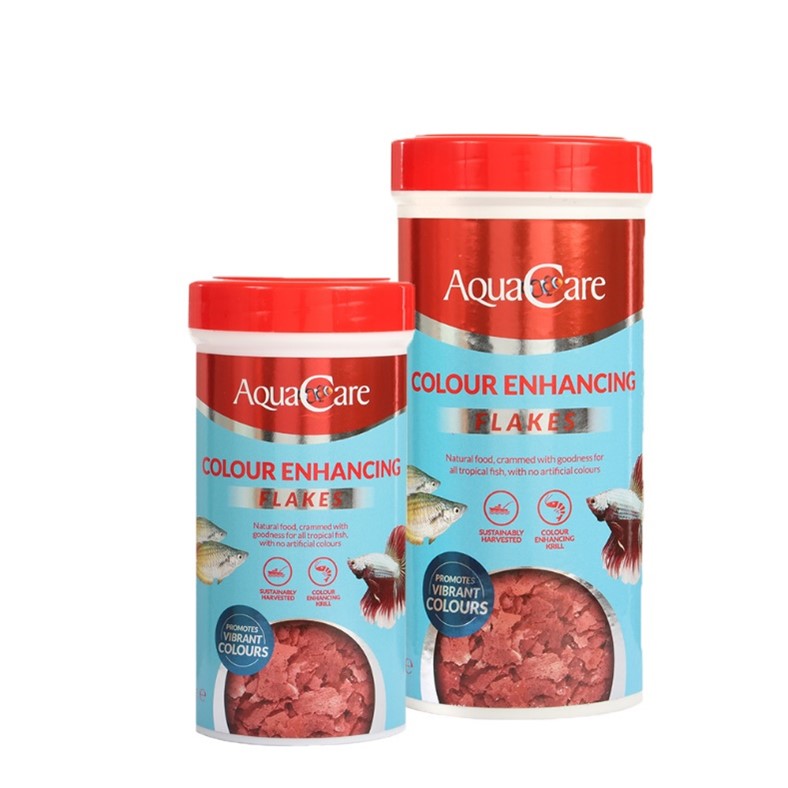
Certain fishes have significantly different nutritional needs and amongst these are livebearers which consume a lot of algae and vegetable matter in the wild. This vegetable flake https://www.fishkeeper.co.uk/aquacare-vegetable-flakes goes heavy on the greens, making a lower protein recipe which suits species with long digestive tracts made to process less rich foods. These types of flake suit small algae-eating cichlids and are a good staple diet for specialists such as the Tanganyikan Tropheus or Malawian mbuna cichlids, as well as making a great food to use in rotation with other flakes for community aquaria housing livebearers or barbs.
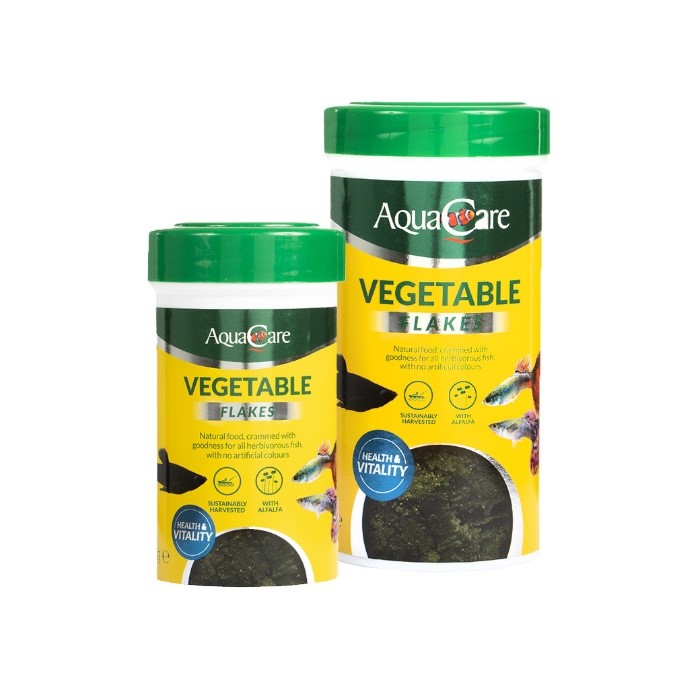
Goldfish are the other group of fish that require a lower protein level than tropicals, although this is often linked to their metabolic rate at their preferred temperature range. Flake foods for goldfish https://www.fishkeeper.co.uk/aquacare-goldfish-flakes-with-mealworm are usually low protein and this is especially the case for pond fish which are able to supplement their diet with live insects. Flakes are best fed to the smallest sizes of goldfish, particularly the naturally shaped hardy forms which are less prone to buoyancy issues which can be exacerbated by taking in air whilst greedily feeding at the surface. Fancy goldfish are best fed a pelleted diet, and these come in a range which, like flakes, includes products with colour enhancing ingredients https://www.fishkeeper.co.uk/aquacare-goldfish-gold-japan.
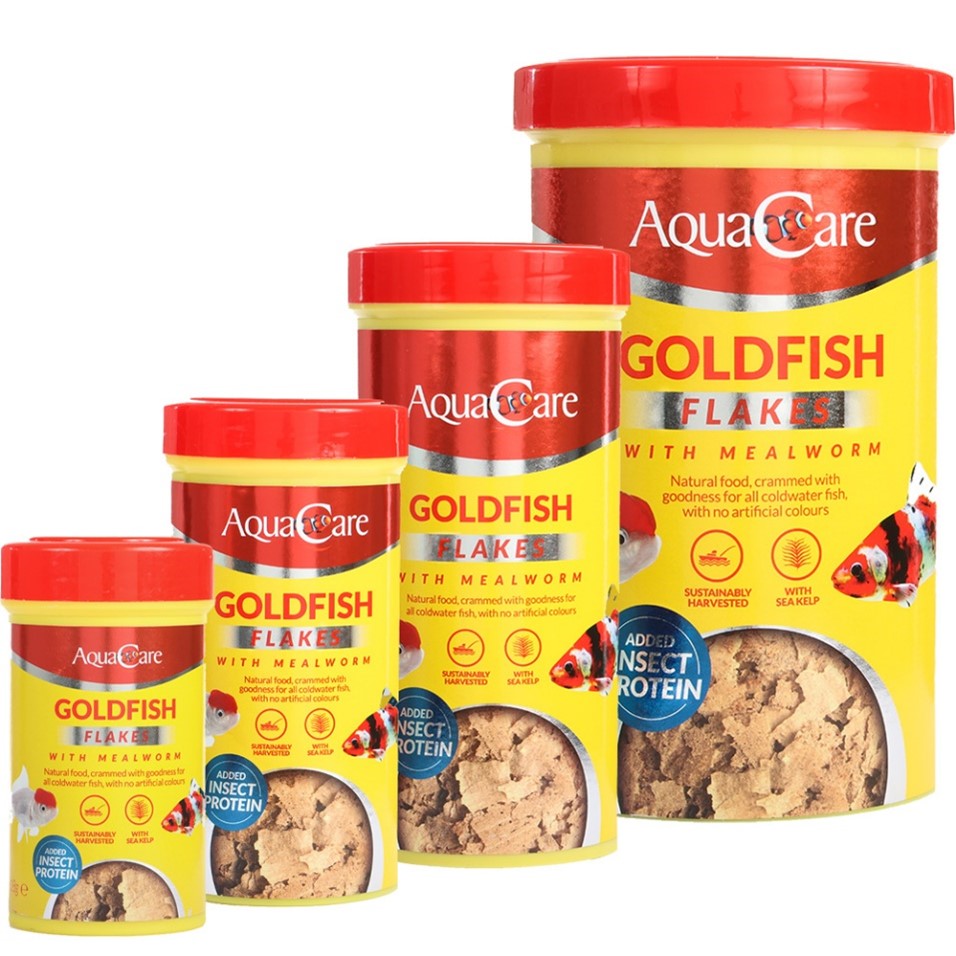
Pairing food particle size to mouth size results in the most efficient feeding, as the longer the food is in contact with the water the more likely the nutrients are to dissolve into the water where they can’t benefit the fish. For this reason, microgranules https://www.fishkeeper.co.uk/aquacare-tropical-micro-granules-with-mealworm-55g are a great way to optimise nutrition, and they sink to the midwater level where many species are most comfortable feeding. They’re also popular with catfish once they reach the lower levels of the aquarium and provide foraging opportunities that pellet, or tablet foods don’t.
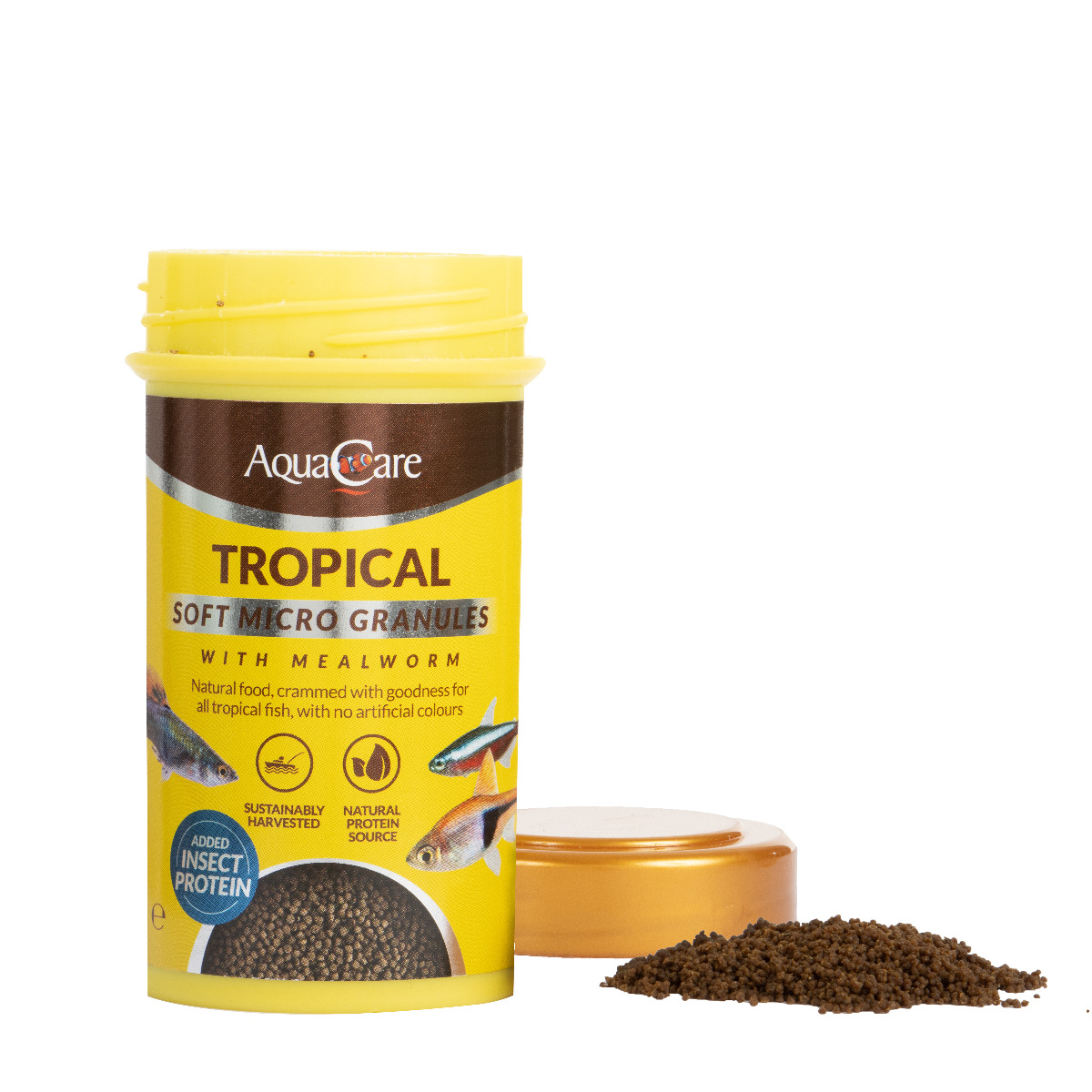
Going up in size for slightly larger mouths, sinking pellet foods https://www.fishkeeper.co.uk/aquacare-soft-tropical-pellets-with-mealworm are ideal for larger community fish, as well as all but the largest cichlids. This format also works well for species such as Eartheaters, which prefer sifting small particle foods from the substrate, even as large adults. Different formulations can be fed in rotation and there are colour enhancing options to be found in this range too https://www.fishkeeper.co.uk/aquacare-pro-colour-soft-tropical-granules as well as those formulated for fishes that do better with lower protein levels https://www.fishkeeper.co.uk/aquacare-african-cichlid-soft-pellets-55g.
For larger fish, small foods are often inefficient and many of these species are used to big meals. For those which are more predatory, a higher protein stick https://www.fishkeeper.co.uk/aquacare-carnivore-soft-sticks makes a good staple, whereas the lower protein formulation https://www.fishkeeper.co.uk/aquacare-african-cichlid-sticks-150g suits those which prefer more greens in their diet. As with most dried diets, rotating between the two can make life more interesting as well as nutritionally complete.
Many of the fishes we keep spend lots of time foraging and this can be duplicated by offering them foods which they have to work on. As well as suiting species that forage in the lower levels of the aquarium, tablet foods can be a great form of enrichment for both fish and fishkeeper alike when stuck to the glass https://www.fishkeeper.co.uk/aquacare-tropical-tabs. Although some species may be capable of swallowing them whole, the density of fine particles in these tabs means that they avoid the usual water exposure issue with loss of nutrients. As with most dry foods, they can be an important component in a broader diet. For species that combine a grazing lifestyle with a diet rich in plant-based protein, algae wafers are the way to go. Many sucker-mouthed fish or substrate pickers consume invertebrates sheltering in algae growths and this means they’re not the simple vegetarians that we might expect. For these types a slightly higher protein content is appropriate https://www.fishkeeper.co.uk/aquacare-spirulina-wafers with some recipes containing a higher percentage of fibre and lower protein for those who really exploit specialist niches such as waterlogged wood https://www.fishkeeper.co.uk/aquacare-algae-wafers-with-oak. For some keepers, oak isn’t just for aquarium cabinets!
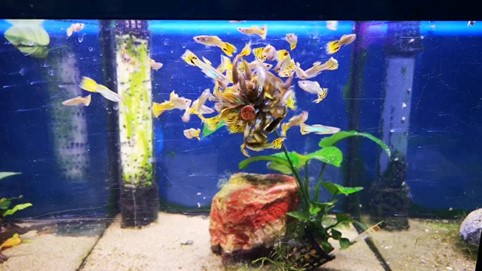
Armed with some of the basics behind all those percentages and pots, hopefully, you can now survey those shelves with the information you need to understand some of the differences. Dry foods are a great example of the advances in aquarium science and together with frozen and live foods, they make satisfying the needs of our aquatic pets easier than ever before.
For delivery before Christmas, orders must be placed on or before 3pm on Wednesday 20th December. We cannot guarantee delivery of these orders pre-Christmas as we are reliant on our couriers, but will use our best endeavours to get orders placed on this date out to you before Christmas. For full details of our festive delivery and opening times click here
Please note: online orders placed after 3pm on Friday 22nd December will not be dispatched until the New Year. For full details of our festive delivery and opening times click here